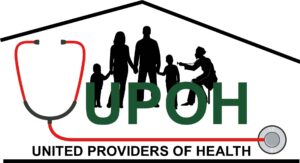
Navigating the Intersectionality of Health Equity
In the complex landscape of healthcare, one crucial concept has gained significant traction in recent years: intersectionality. This paradigm acknowledges that individuals experience various forms of oppression and privilege that intersect and influence their health outcomes. Furthermore, understanding intersectionality is vital for achieving health equity, as it allows us to address the multifaceted factors that contribute to disparities in healthcare access and outcomes. In this blog, we’ll delve into the intricacies of intersectionality and explore its implications for promoting health equity.
Understanding Intersectionality
Intersectionality, a term coined by legal scholar Kimberlé Crenshaw in 1989, highlights the interconnected nature of social categorizations such as race, gender, sexuality, socioeconomic status, and disability. Rather than viewing these categories in isolation, intersectionality recognizes that individuals occupy multiple social positions simultaneously, each shaping their experiences and opportunities.
Health Equity and Its Importance
Health equity refers to the attainment of the highest level of health for all people, regardless of their social or economic circumstances. Unlike equality, which assumes that everyone receives the same resources or opportunities, equity recognizes that individuals have different needs and may require varying levels of support to achieve optimal health outcomes. Achieving health equity involves addressing systemic barriers and injustices that contribute to disparities in health.
The Intersectionality of Health
When examining health outcomes through an intersectional lens, we see that marginalized communities often experience disproportionate rates of illness, disability, and premature death compared to privileged groups. For example, individuals who belong to racial or ethnic minority groups may face barriers such as discrimination, lack of access to quality healthcare, and socioeconomic disadvantage, all of which contribute to health disparities.
Moreover, the intersection of multiple marginalized identities can exacerbate health inequities. For instance, a Black transgender woman may face discrimination based on both her race and gender identity, leading to increased vulnerability to mental health issues, substance abuse, and violence. Recognizing these intersecting factors is crucial for developing targeted interventions that address the specific needs of marginalized communities.
Promoting Health Equity Through Intersectionality
To achieve health equity, it is essential to adopt an intersectional approach that considers the diverse experiences and needs of individuals and communities. This involves:
- Centering Marginalized Voices: Amplifying the voices of marginalized communities in healthcare decision-making processes ensures that interventions are culturally competent and responsive to their needs.
- Addressing Structural Inequities: Tackling systemic issues such as poverty, racism, sexism, and homophobia requires policy changes and investments in social determinants of health, including education, housing, employment, and access to healthy food.
- Providing Culturally Competent Care: Healthcare providers must receive training in cultural competence to understand the unique perspectives and experiences of diverse patient populations. This includes acknowledging the impact of intersectional identities on health and providing respectful, nonjudgmental care.
- Collecting Disaggregated Data: By collecting data on intersecting identities, such as race, gender, and sexual orientation, policymakers and researchers can identify disparities more accurately and tailor interventions accordingly.
Conclusion
Intersectionality serves as a powerful framework for understanding the complexities of health equity and addressing the intersecting factors that contribute to disparities in healthcare access and outcomes. By adopting an intersectional approach, we can work towards dismantling systemic barriers and creating a more just and equitable healthcare system for all individuals, regardless of their social identities. Embracing diversity and inclusivity in healthcare is not only a moral imperative but also essential for achieving optimal health outcomes for everyone.
